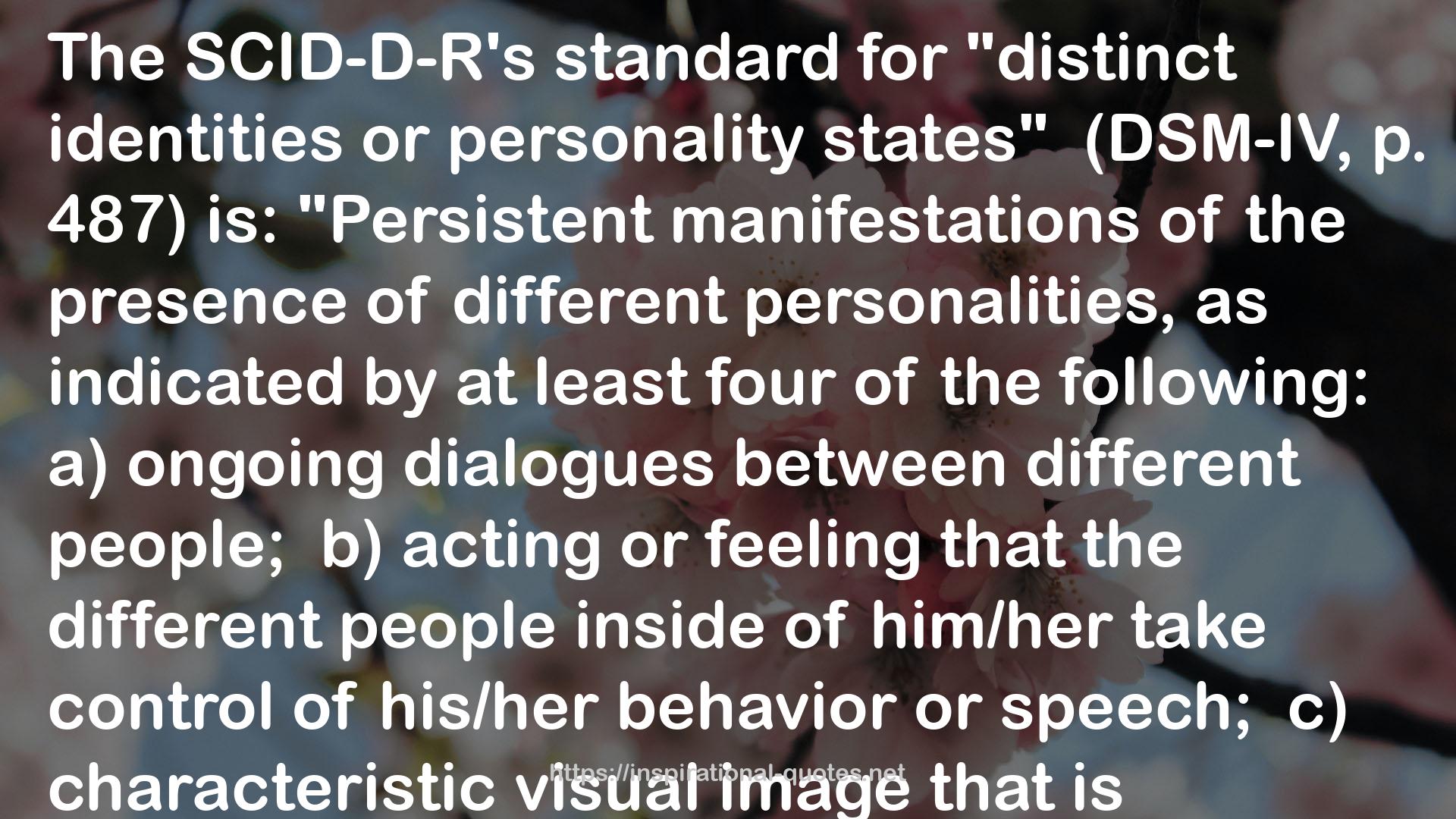" The SCID-D-R's standard for "distinct identities or personality states"
(DSM-IV, p. 487) is: "Persistent manifestations of the presence of different personalities, as indicated by at least four of the following:
a) ongoing dialogues between different people;
b) acting or feeling that the different people inside of him/her take control of his/her behavior or speech;
c) characteristic visual image that is associated with the other person, distinct from the subject;
d) characteristic age associated with the different people inside of him/her;
e) feeling that the different people inside of him/her have different memories, behaviors, and feelings;
f) feeling that the different people inside of him/her are separate from his/her personality and have lives of their own" (Steinberg, 1994, p. 106).
[The author believes that it is of considerable importance that none of the SCID-D-R's six criteria for "distinct personalities or personality states" are observable signs; each of the six is a subjective symptom or experience that must be reported to the test administrator. This striking fact supports the contention that assessment of dissociation should be based on subjective symptoms rather than signs (Dell, 2006b. 2009b).] "
Image for Quotes
 (DSM-IV, p. 487) is: "Persistent manifestations of the presence of different personalities, as indicated by at least four of the following:
(DSM-IV, p. 487) is: "Persistent manifestations of the presence of different personalities, as indicated by at least four of the following: a) ongoing dialogues between different people;
b) acting or feeling that the different people inside of him/her take control of his/her behavior or speech;
c) characteristic visual image that is associated with the other person, distinct from the subject;
d) characteristic age associated with the different people inside of him/her;
e) feeling that the different people inside of him/her have different memories, behaviors, and feelings;
f) feeling that the different people inside of him/her are separate from his/her personality and have lives of their own" (Steinberg, 1994, p. 106).
[The author believes that it is of considerable importance that none of the SCID-D-R's six criteria for "distinct personalities or personality states" are observable signs; each of the six is a subjective symptom or experience that must be reported to the test administrator. This striking fact supports the contention that assessment of dissociation should be based on subjective symptoms rather than signs (Dell, 2006b. 2009b).]" style="width:100%;margin:20px 0;"/>